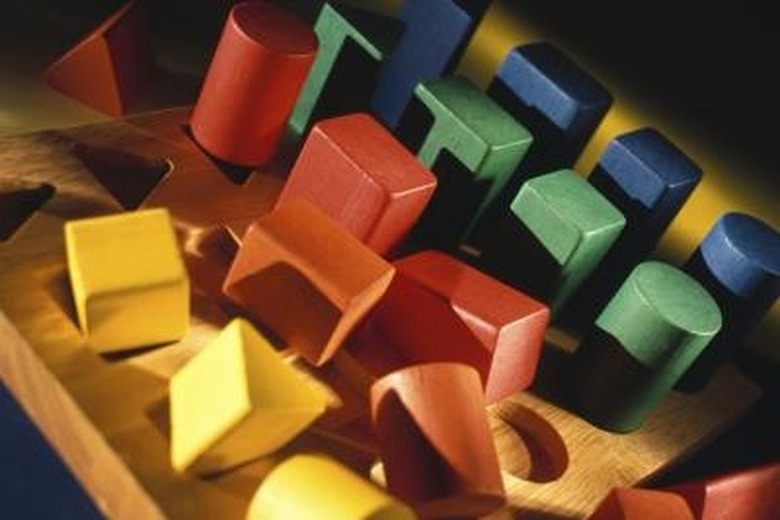How To Find The Area Of A Rectangular Prism
A rectangular prism's two identical ends are rectangles, and as a result, the four sides between the ends are also two pairs of identical rectangles. Because a rectangular prism has six rectangular faces or sides, its surface area is just the sum of the six faces, and because each face has an identical opposite, you can calculate the surface area with the formula 2 * length * width + 2 * width * height + 2 * height * length, where length, width and height are the prism's three dimensions.
Step 1
Find the length, width and height measurements of the prism. For this example, let the length be 12, the width be 10 and the height be 20.
Step 2
Multiply the length and width, then double that product. In this example, 12 multiplied by 10 equals 120, and 120 multiplied by 2 equals 240.
Step 3
Multiply the width and height, then double that product. In this example, 10 multiplied by 20 equals 200, and 200 multiplied by 2 equals 400.
Step 4
Multiply the height by the length, then double that product. In this example, 20 multiplied by 12 equals 240, and 240 multiplied by 2 equals 480.
Step 5
Sum the three doubled products to obtain the rectangular prism's surface area. Concluding this example, adding together 240, 400 and 480 results in 1,120. The example's rectangular prism has a surface area of 1,120.
Cite This Article
MLA
Gartneer, Chance E.. "How To Find The Area Of A Rectangular Prism" sciencing.com, https://www.sciencing.com/area-rectangular-prism-8256517/. 24 April 2017.
APA
Gartneer, Chance E.. (2017, April 24). How To Find The Area Of A Rectangular Prism. sciencing.com. Retrieved from https://www.sciencing.com/area-rectangular-prism-8256517/
Chicago
Gartneer, Chance E.. How To Find The Area Of A Rectangular Prism last modified March 24, 2022. https://www.sciencing.com/area-rectangular-prism-8256517/
